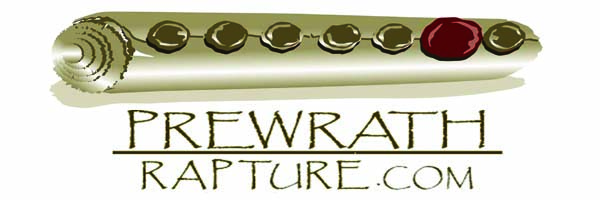The Feasts of the Jews – Part IV
Charles Cooper
The parallel and reinforcing relationship between the death, burial, and resurrection of Jesus Christ and the spring Jewish feasts is one in which our Lord establishes a clearly delineated temporal sequence consisting of the exact days and months on which each Jewish feast historically occurred. The temporal sequence of Passover, Unleavened Bread, and First Fruits is evident in the events connected with Christ. In part III, we demonstrated that there is no fulfillment relationship between the burial of Christ and the Feast of Unleavened Bread. The body of the Lord Jesus entered the grave on the 14th of Nisan. The Feast of Unleavened Bread began on the 15th of that same month.
The third spring Jewish feast celebrates the barley harvest. Could there be any corresponding fulfillment between this feast and the resurrection of Christ, as some argue? The Feasts of Passover, Unleavened Bread, Trumpets, Atonement, and Booths all have a specific day of the month on which they are to occur. But, in contrast, both the Feasts of First Fruits and Pentecost are not assigned a specific date on the Jewish calendar. Regarding the Feast of First Fruits, the Bible states that the Jews were to celebrate this feast, “On the day after the Sabbath”. It is clear that the text speaks of the Sabbath that occurs after the Feast of Passover. However, scholars do not agree whether a special Sabbath or the regular Sabbath is the focus of this passage.
Scripture commands: “On the day after the Sabbath the priest shall wave [the sheaf].” The day after the Sabbath is typically Sunday—the first day of the Jewish week, unless a special Sabbath is the focus of the text, in which case any day of the week would suffice. The day of the week when the Feasts of Unleavened Bread, Trumpets, Atonement, and Booths were festive Sabbaths, the weekly Sabbath always occurred immediately before or after them. In other words, a festive Sabbath and the weekly Sabbath could follow back-to-back.
In order for text to refer to a special Sabbath, the Feast of Unleavened Bread must be the object of the directive: “On the day after the Sabbath the priest shall wave [the sheaf].” Since the first day of Unleavened Bread was a festive Sabbath, it is possible that the Feast of First Fruits would begin the next day. Under this scenario, the 14th of Nisan (Passover) could happen on a Thursday. The 15th of Nisan followed, which would be the beginning of Unleavened Bread (a festive Sabbath). The weekly Sabbath would follow immediately on the 16th of Nisan. Sunday, the 17th of Nisan, would thus become the day after the Sabbath and the Feast of First Fruits. This scenario explains the calendrical dates associated with the death, burial, and resurrection of Christ.
If there is any correspondence between the Lord’s resurrection and the Feast of First Fruits, then that celebration must have occurred on a Sunday, because Scripture clearly indicates that our Lord’s resurrection occurred on a Sunday, the first day of the week. Scripture is emphatic that Christ rose from the dead on the first day of the week, i.e. Sunday. Luke 24:1-3 states, “But on the first day of the week, at early dawn, they went to the tomb, taking the spices they had prepared. And they found the stone rolled away from the tomb, but when they went in they did not find the body of the Lord Jesus.” With this statement, the gospels of Matthew, Mark, and John agree.
If First Fruits fell on a Sunday, then the 14th of Nisan must have been a Thursday. Thus, the Lord was in the tomb Thursday (maybe one or two hours), Friday night and day, Saturday night and day, and Sunday night – a total of three days and three nights.
Matthew 27:62-64a states, “The next day (Friday, Nisan 15), that is, after the day of Preparation (on the preceding day, Thursday, Nisan 14), the chief priests and the Pharisees gathered before Pilate and said, “Sir, we remember how that impostor said, while he was still alive, ‘After three days I will rise.’ Therefore, order the tomb to be made secure until the third day….” This indicates that the people understood Jesus to mean that his resurrection would occur before the fourth day. The Pharisees only requested the tomb to be guarded through the third day since the disciples would have to steal the Lord’s body before day four in order for their trick to work. It also makes clear that the disciples would need to take the body at night. They could not steal it during the day without being noticed and still make the intended deception successful.
In addition, I do not think the chief priests and the Pharisees would have gone to Pilate on the Sabbath, since such agitation would violate the Sabbath. According to the chronology of Matthew 28:1, the women came to the tomb early Sunday morning. Matthew states, “The guards trembled and became like dead men” when the angel came to roll the stone away. Since the chief priests and the Pharisees wanted the tomb guarded through the third day’s night (Sunday night – remember Jewish night comes before the day), the guards were finishing their last night to guard the tomb.
The Jewish historian Josephus indicates that the Feast of First Fruits fell on the 16th day of Nisan. This is true, except in those years when Nisan 14 fell on a Thursday. This puts the 16th on a Sabbath. In those years when the Nisan 16 fell on the Sabbath, the Feast of First Fruits would occur on Sunday (Nisan 17), the day after the Sabbath, which is what Scripture commands. It was only during certain years of the Jewish calendar that the “great day (Sabbath)” and a regular Sabbath fell back-to-back. The week of our Lord’s death was one such date on the Jewish calendar.
That the Lord Jesus rose from the dead on this day is significant. However, was the resurrection of the Lord Jesus the only event corresponding to the Feast of First Fruits? We think not. Matthew records at the death of the Lord,
Tombs were opened, and the bodies of many saints who had died were raised. (They came out of the tombs after his resurrection and went into the holy city and appeared to many people. [cf. Matthew 27:53])
The apostle Paul alone designates the Lord Jesus, “The firstfruits of those who have fallen asleep” (I Cor. 15:20, 23). However, along with the Lord Jesus, many resurrected individuals were included in the firstfruits of the resurrection. They were God’s wave offering, a testimony to all the world of the greater harvest to follow when all of God’s elect who died will come out of the grave.
Therefore, it is possible to say that the resurrection of Christ is a pattern fulfillment. That is, the resurrection of Christ, along with many others at that time, follows a pattern established after the historical celebration of the Feast of First Fruits.
The Feast of Pentecost comes exactly 50 days later. Leviticus 23:21 explicitly states that this feast is to have a perpetual observance. The precision necessary to mark the actual date on which this event must occur leaves little doubt that God intends a pattern fulfillment. It would lose its significance if that fulfillment occurred on any other month or a different day. And any possibility to convince the Jews of God’s intent concerning pattern fulfillment would suffer greatly. The Jews were meticulous in counting forward exactly 50 days from the Feast of First Fruits.
Consequently, it is no coincidence that on the day of Pentecost, which followed the death and resurrection of the Lord Jesus, the permanent indwelling of believers by the Holy Spirit began. This empowering event marked the beginning of God’s great harvest to gather his elect (both Jew and Gentile) into his kingdom. However, the fact that the third person of the Trinity is the primary focus of this pattern, it is incorrect to speak of this feast as a fulfillment in connection with Jesus Christ.

